This article was co-authored by Pippa Elliott, MRCVS. Dr. Elliott, BVMS, MRCVS is a veterinarian with over 30 years of experience in veterinary surgery and companion animal practice. She graduated from the University of Glasgow in 1987 with a degree in veterinary medicine and surgery. She has worked at the same animal clinic in her hometown for over 20 years.
This article has been viewed 60,983 times.
Most cats have beautiful eyes. In fact, many women will try to emulate their evocative feline tilt with “cat eye” make up. Cat eyes are also a wonderful feat of anatomical engineering. Their eyelids are designed to glide over the cornea (the surface of the eye), with the dual purposes of spreading tear film that keeps the cornea moist and to also sweep away any grit or dust that might irritate the eye. However, some cats may have problems with their eyelids.[1]
Steps
Part 1: Examining Your Cat's Eyes
-
1Bring your cat to a spot by a window or in a well lit room. Make sure your cat is facing into the light so that her face is fully illuminated.[2]
-
2Have an assistant sit on a chair with your cat on her lap. Ask the assistant to gently restrain your cat by holding her in a way that seems comfortable for her but will also keep her still.[3]
- Your assistant can cup her against your chest or place both hands on either side of the cat. Your assistant should put your cat in a position where she feels relaxed.
Advertisement -
3Stand or kneel facing the cat, with your eyes level with her eyes. Use one hand (your left hand if you are right handed) to steady her head and turn it towards you.
- Do this by making a "C-shape" with your forefinger and thumb; place your cat's chin on your thumb and place your forefinger over her forehead.
-
4Check if both of your cat's eyes are the same size. If one eye is smaller than the other, the chances are she is squinting.[4]
- Cats do this in response to eye irritation or discomfort, so the smaller eye bears closer examination later as it may be the problem eye.
-
5Notice if her eyes are red or inflamed. Eyelid abnormalities are often caused by rubbing and redness on the surface of your cat's eye, so examining the cornea can help tell you if there is a problem. Irritation or infection will cause the cornea to become red or inflamed.[5]
- Compare one eye with another. Both should appear the same, and the whites of both eyes should not be inflamed. Look for any large angry blood vessels threading over the white of your cat's eyes.
- If one eye is redder than the other, this is likely to be your cat's problem eye. If both eyes are red it could indicate a more general problem such as an eye infection, but it is also possible your cat may have an anatomical problem that is affecting both of her eyes.
-
6Look for any discharge coming from her eyes. Discharges can be mucopurulent (a mixture of jelly and pus), purulent (pus), or clear (usually tear fluid).[6]
- A common eye problem in cats is a narrow or blocked tear duct within the eyelid. Because your cat's tears cannot drain away they may spill over her cheek and leave a rust-colored stain.
Part 2: Inspecting Your Cat's Eyelids
-
1Use a pen light to examine your cat's eyelids. This is a useful tool because it throws strong shadows on the eye and can illuminate any stray hairs casting a shadow on the corneas of the eyes.You will also be able to see your cat's eyelids more clearly.[7]
- You need good eyesight to examine your cat's eyelids, as you'll be looking at your cat's eyelashes and for any stray hairs. So if you are farsighted, put on your glasses before you start the examination with the pen light.
-
2Check if your cat's eyelids are flush with the surface of the cornea. In cats a common problem is entropion, where their eyelids turn inwards. Normally, their eyelid should glide across the cornea without digging in or rubbing eyelashes against the surface of the cornea.[8]
- If you aren't sure what a normal eyelid looks like, study your own eyelids in the mirror. You will notice your eyelashes point away from your eye, and your eyelid has a narrow rim of hairless skin which rests against the cornea. As you blink, your eyelid will travel parallel to the cornea without digging in.
-
3Watch your cat blink. Does their eyelid glide over the surface or does it have a tendency to roll inward?
-
4Notice if their eyelashes point away from the cornea. Take your time and examine each eyelash to make sure none of them are rolling inwards towards the eye.
- If just one hair is rolling inwards, give your cat's eye a wipe with a moist towel or cotton ball. Your cat may just have one stray loose hair that comes away easily.
- Most anatomical problems on cats involve their whole eyelid, in which case a whole row of lashes will turn inward rather than just one eyelash.
-
5Check if the edge of their eyelids are smooth. Just like your eyes, your cat's eyelids should be smooth without any lumps or bumps.
- A common eye problem for cats is cysts that develop on the leading edge (far edge) of their eyelid. These cysts look like round fleshy beads stuck onto the cat's eyelid.
Part 3: Identifying Common Eyelid Conditions
-
1Place your fingertip 1cm away from the leading edge of your cat's eye. Then, apply a gentle dragging movement to the skin, away from her eye. This will help you check for entropion in your cat's eye.[9]
- Entropion is the turning in of the eyelids. It can affect both of your cat's eyelids or just one eyelid. This turning in happens because of excessive skin that pushes your cat's eyelid up into a scroll shape. The two most common other conditions to look for are eyelid cysts (bumps along the smooth line of the eyelid) or poor tear duct drainage (constant wetness beneath the cat's eyes.)
- To check the lower eyelid you will gently pull downward, and to check the upper eyelid you will gently pull upward. This will help to move your cat's eyelid away from the cornea. In a normal eyelid, the pink lining of the eyelid will be revealed.
- If your cat has entropion, you will be taking up slack skin, rather than dragging on the eyelid, so it will be more difficult to expose the inner pink lining of your cat's eye.
-
2While applying traction to your cat's eyelid, look for any wet hairs. If wet hairs are rubbing on your cat's eye and popping out towards you, your cat likely has entropion.[10]
-
3Notice if your cat has rust-colored streaks on her cheeks. Sometimes entropion puts a kink in your cat's tear ducts, which are located in the inner corner of your cat's eyelids. If your cat's tear ducts cannot drain properly, your cat will have tear staining or rust-colored streaks on her cheeks.[11]
-
4Take your cat to the vet if they have entropion. Entropion is an uncomfortable condition for your kitty. It really is the equivalent of having permanent grit in your eye.
- Keep in mind that many cats do not show discomfort due to entropion, because they have gotten used to having the condition and are not aware this may be an issue that can be fixed.
-
5Try to draw a mental line of eyeliner around your cat's eyelids. If any bumps get in the way while you do this, your cat may have eyelid cysts. Eyelid cysts (meibomian gland cysts) look like small pink or brown beads stuck onto the margins of your cat's eyelids.[12]
-
6Ask your vet if your cat needs surgery to remove any cysts. Eyelid cysts are not cancerous and not life threatening, but they do rub on the surface of your cat's eye and cause irritation, so, you would likely want to have them surgically removed from your cat's eyes.[13]
-
7Notice if your cat has constantly wet cheeks. Keep in mind that some cats are born with narrow tear ducts which can't properly drain tear fluid away. As a result, their tears will continually spill over onto their cheeks, making them wet.
-
8Allow your vet to check your cat's tear ducts. To reach a clear diagnosis, your vet will put a few drops of a special dye called fluorescein into your cat's eye.[14]
- This dye is safe and non-irritating. It will drain via the tear ducts to the tip of the nose and inside the upper lip, leaving a green stain. If the tear ducts are blocked, the dye will spill over your cat's face, leaving an orange stain.
- To treat blocked tear ducts, it is possible to flush them by placing a fine catheter into the duct and washing them through with sterile saline. However, your cat will need to be anesthetized during this procedure.
References
- ↑ Small Animal Ophthalmology. Peiffer & Peterson-Jones. WB Saunders. 4th edition
- ↑ Small Animal Ophthalmology. Peiffer & Peterson-Jones. WB Saunders. 4th edition
- ↑ https://youtu.be/3dC5dpbpP-w?t=29
- ↑ https://hospital.vetmed.wsu.edu/2022/01/03/examining-and-medicating-a-cats-eyes/#:~:text=To%20examine%20the%20eyes%2C%20the,will%20open%20the%20eye%20widely.
- ↑ Small Animal Ophthalmology. Peiffer & Peterson-Jones. WB Saunders. 4th edition
- ↑ Small Animal Ophthalmology. Peiffer & Peterson-Jones. WB Saunders. 4th edition
- ↑ Small Animal Ophthalmology. Peiffer & Peterson-Jones. WB Saunders. 4th edition
- ↑ Small Animal Ophthalmology. Peiffer & Peterson-Jones. WB Saunders. 4th edition
- ↑ Ophthalmic Disease and its Management. Glaze. Vet Clin North Am Small Anim Pract 27 (6), 1505-1522
- ↑ Ophthalmic Disease and its Management. Glaze. Vet Clin North Am Small Anim Pract 27 (6), 1505-1522
- ↑ Ophthalmic Disease and its Management. Glaze. Vet Clin North Am Small Anim Pract 27 (6), 1505-1522
- ↑ Ophthalmic Disease and its Management. Glaze. Vet Clin North Am Small Anim Pract 27 (6), 1505-1522
- ↑ Ophthalmic Disease and its Management. Glaze. Vet Clin North Am Small Anim Pract 27 (6), 1505-1522
- ↑ Ophthalmic Disease and its Management. Glaze. Vet Clin North Am Small Anim Pract 27 (6), 1505-1522
About This Article
To diagnose eyelid conditions in cats, start by examining its eyes closely with a pen light. If the eyelids turn inwards or roll inwards when the cat blinks, it may have entropion, which is very common. Rust-colored tears on its face can also indicate entropion. Eyelid cysts are another common issue, so check that the eyelids are smooth and bump-free. If you notice any of these symptoms, it's best to take your cat to a vet for evaluation. For more tips from our Veterinary co-author on how to examine eyelids, read on!
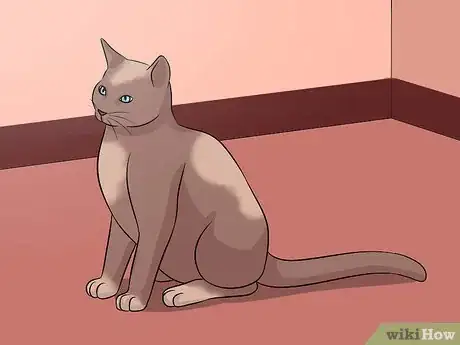
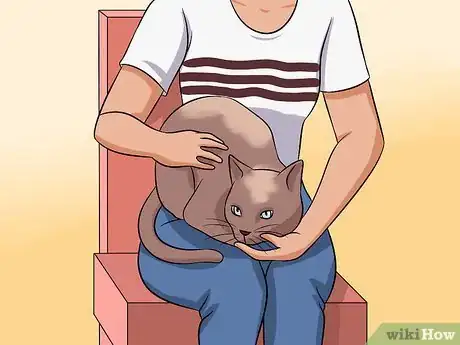
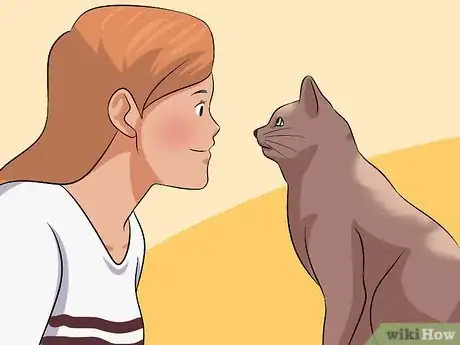
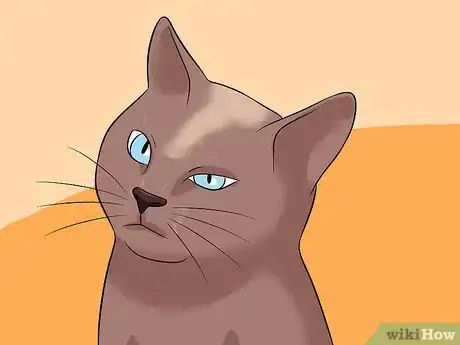
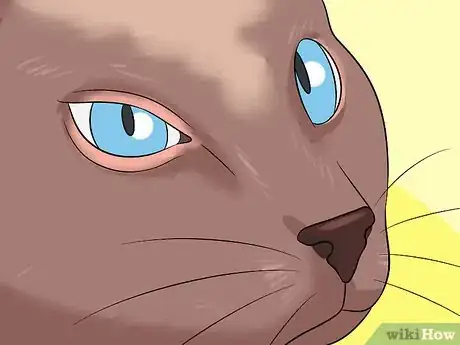


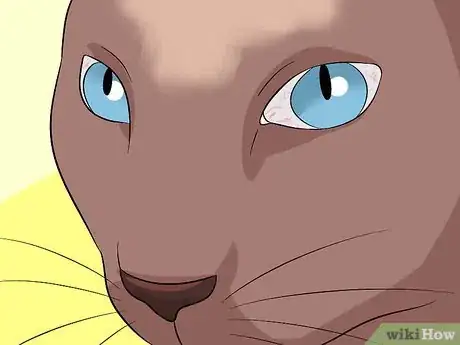
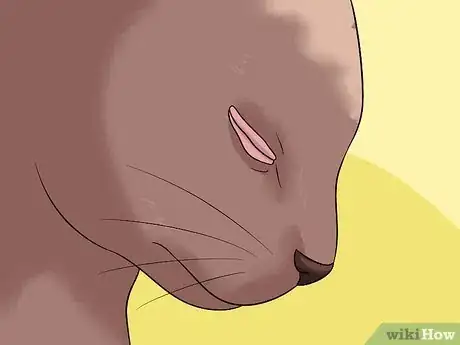
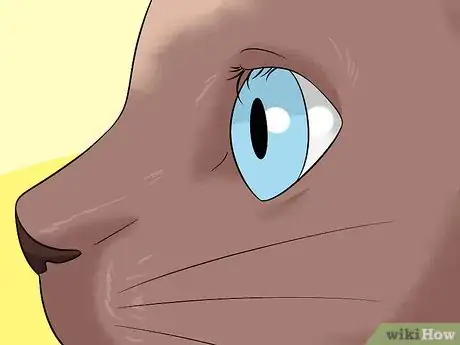
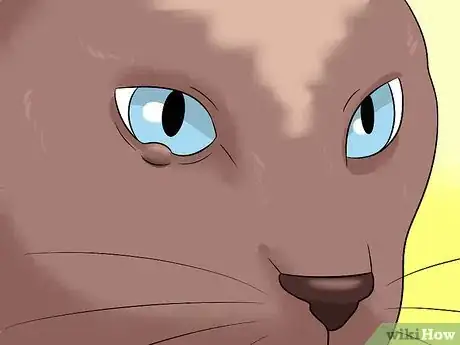
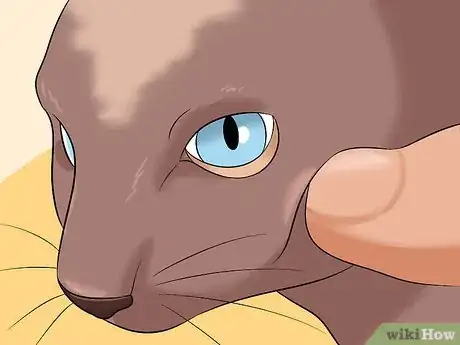
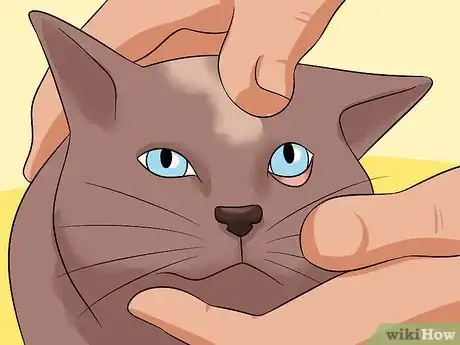

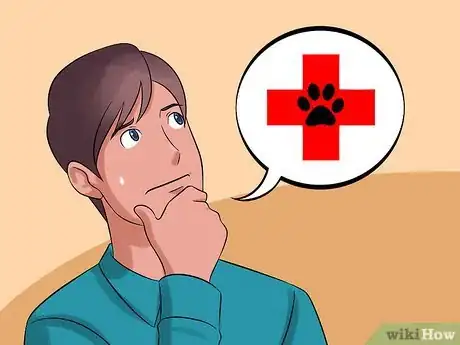
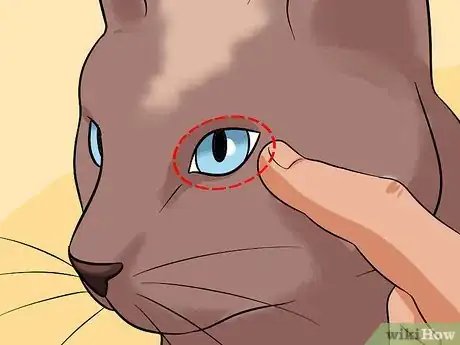
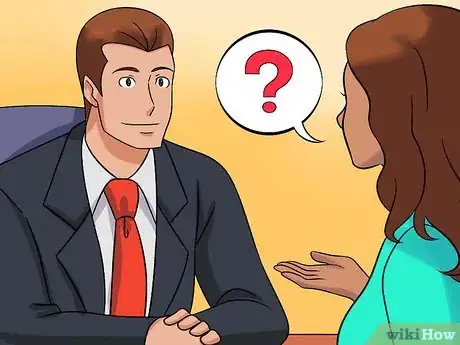
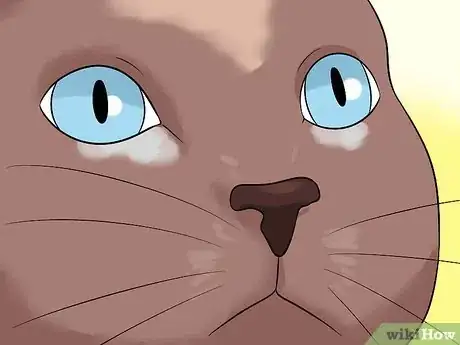
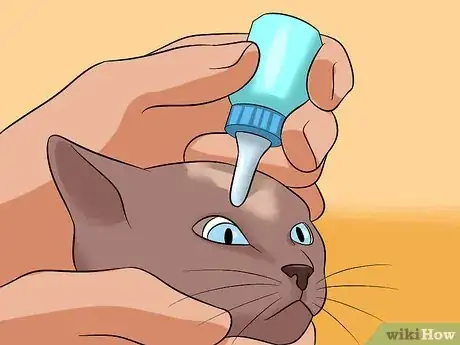
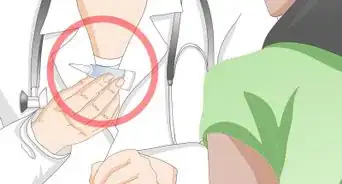
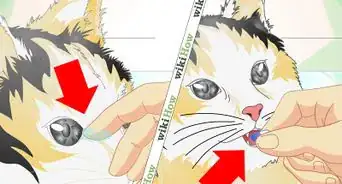
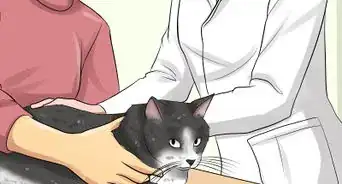


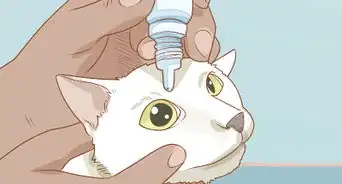
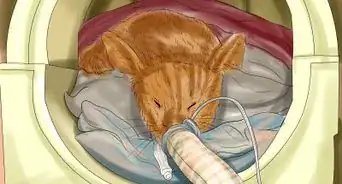
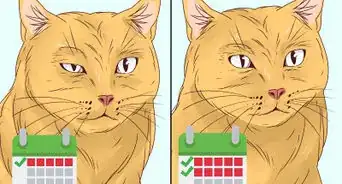

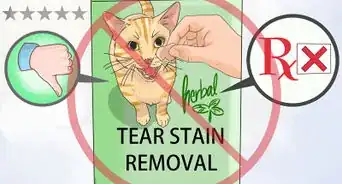

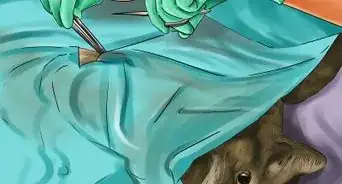










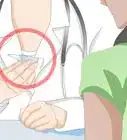

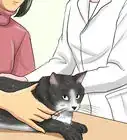
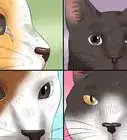



































Medical Disclaimer
The content of this article is not intended to be a substitute for professional medical advice, examination, diagnosis, or treatment. You should always contact your doctor or other qualified healthcare professional before starting, changing, or stopping any kind of health treatment.
Read More...